- 04 MAI
- LUXEMBOURG – Luxembourg - Des substructions attribuées à des églises du 13e et du 17e siècle d’un couvent franciscain construit vers 1250 ont été découvertes par le service archéologique du MNHA dans le cadre des travaux visant la transformation du bâtiment dit "Veräinshaus", place Guillaume II - Un sondage réalisé le long du "Veräinshaus" confirme la mise au jour de la partie nord du chœur de l'église du 13e siècle orientée parallèlement à la rue Notre Dame et la continuation des substructions de cette église sur la place Guillaume et l’existence de bâtiments conventuels connus des plans historiques ainsi que la partie nord de la chapelle de Mansfeld. Un deuxième sondage a révélé que les structures de l'église du 17e siècle sont bien préservées jusqu'à une profondeur de 4 mètres sous le pavage actuel et comprennent de nombreuses tombes superposées. La découverte de tombes richement décorées lors des fouilles au "Veräinshausgaard" amène à penser que le souterrain de la place Guillaume II renferme des tombes autrement plus riches, les dépouilles des citoyens les plus illustres étaient généralement inhumées à l'intérieur des églises. Il faut mentionner également la découverte d’une fondation d'un bâtiment antérieur à l'église du 13e siècle ainsi que celle d’indications témoignant de la présence d'activités métallurgiques.
http://www.gouvernement.lu/salle_presse/actualite/2011/05-mai/04-modert/index.html
- ROYAUME-UNI – 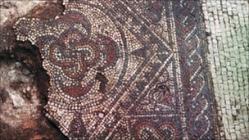
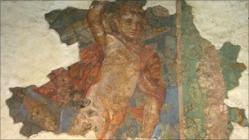 Southwell. A university lecturer is calling for the rejection of a plan to build houses next to the site of a Roman settlement in Nottinghamshire. Dr Will Bowden said the discovery of "rare" archaeological remains dating to the 7th or 8th Century made the site "wholly inappropriate" for development. The site is next to a scheduled monument - potentially one of the largest Roman villas in the UK, according to the University of Nottingham lecturer. An investigation of the area the planning application covers found a Roman wall and archaeological remains. "The discovery of remains, of probably Christian inhabitants, dating to the late 7th or 8th Century on the development site represents the period between the Roman villa and Minster," Dr Bowden said. "Having this continual sequence of occupation - the villa, the burials and the Minster - is incredibly rare and arguably unique for a Roman villa in the UK." He added: "There is something very unusual going on at Southwell, and it is potentially of a rarity that would make its partial excavation in a development context wholly inappropriate." Southwell clergymen have been uncovering bits of mosaic in their back gardens since the 18th Century - Excavations in 1959 uncovered parts of a large Roman villa - a series of four rooms with mosaics and an impressive bath house - In 2004 a section of Roman wall and the remains of a possible mosaic pavement were found - Further work in 2008 revealed a monumental wall made with massive sandstone blocks which has been traced for some considerable length
Southwell. A university lecturer is calling for the rejection of a plan to build houses next to the site of a Roman settlement in Nottinghamshire. Dr Will Bowden said the discovery of "rare" archaeological remains dating to the 7th or 8th Century made the site "wholly inappropriate" for development. The site is next to a scheduled monument - potentially one of the largest Roman villas in the UK, according to the University of Nottingham lecturer. An investigation of the area the planning application covers found a Roman wall and archaeological remains. "The discovery of remains, of probably Christian inhabitants, dating to the late 7th or 8th Century on the development site represents the period between the Roman villa and Minster," Dr Bowden said. "Having this continual sequence of occupation - the villa, the burials and the Minster - is incredibly rare and arguably unique for a Roman villa in the UK." He added: "There is something very unusual going on at Southwell, and it is potentially of a rarity that would make its partial excavation in a development context wholly inappropriate." Southwell clergymen have been uncovering bits of mosaic in their back gardens since the 18th Century - Excavations in 1959 uncovered parts of a large Roman villa - a series of four rooms with mosaics and an impressive bath house - In 2004 a section of Roman wall and the remains of a possible mosaic pavement were found - Further work in 2008 revealed a monumental wall made with massive sandstone blocks which has been traced for some considerable length
http://www.bbc.co.uk/news/uk-england-nottinghamshire-13083692
- EGYPTE – 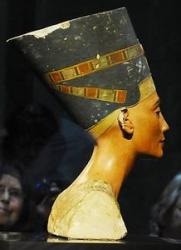 – Le Caire - Egypt's minister for antiquities Zahi Hawass said a letter would be sent to Germany to demand the return of the Nefertiti bust, nearly a century after it was uncovered on the banks of the Nile- "A formal request will be sent through the Egyptian foreign ministry next week, attached with all the evidence that shows the 3400-year-old statue was smuggled out of the country illegally," Hawass said today. Hawass had already sent a request to Germany in January in his capacity as head of the Supreme Council of Antiquities, one day before the launch of anti-regime protests that led to the ouster of president Hosni Mubarak. The German government has denied repeated Egyptian requests to have the bust back, insisting there is nothing illegal about its acquisition. Germany says the bust - unearthed in 1912 by German archaeologist Ludwig Borchardt - was bought legally by the Prussian state, and that there are documents to prove it. Nefertiti, renowned as one of history's great beauties, was the wife of Pharaoh Akhenaton, remembered for having converted his kingdom to monotheism with the worship of one sun god, Aton. The bust is at the top of a "wish list" of five major artifacts exhibited abroad that Egypt wants returned as part of its cultural heritage.
– Le Caire - Egypt's minister for antiquities Zahi Hawass said a letter would be sent to Germany to demand the return of the Nefertiti bust, nearly a century after it was uncovered on the banks of the Nile- "A formal request will be sent through the Egyptian foreign ministry next week, attached with all the evidence that shows the 3400-year-old statue was smuggled out of the country illegally," Hawass said today. Hawass had already sent a request to Germany in January in his capacity as head of the Supreme Council of Antiquities, one day before the launch of anti-regime protests that led to the ouster of president Hosni Mubarak. The German government has denied repeated Egyptian requests to have the bust back, insisting there is nothing illegal about its acquisition. Germany says the bust - unearthed in 1912 by German archaeologist Ludwig Borchardt - was bought legally by the Prussian state, and that there are documents to prove it. Nefertiti, renowned as one of history's great beauties, was the wife of Pharaoh Akhenaton, remembered for having converted his kingdom to monotheism with the worship of one sun god, Aton. The bust is at the top of a "wish list" of five major artifacts exhibited abroad that Egypt wants returned as part of its cultural heritage.
http://www.theaustralian.com.au/news/world/egypt-demands-germany-return-3400-year-old-queen-nefertiti-bust/story-e6frg6so-1226049703735
- SRI LANKA – 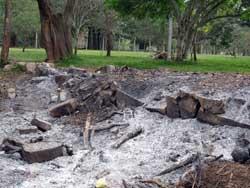
Mahameuna Uyana - Archaeologists have expressed concern about the ongoing development activities in the historic Mahameuna Uyana that are not in conformity with the standards of archaeological conservation. The Director of Archaeology of the Maha Vihara Project, Prof. T G Kulatunga was of the opinion that the haphazard cutting and removal of trees would cause extensive damage to the archaeological site. The cutting down of trees before planting new trees would turn Mahameuna Uyana into a desert. The workers have uprooted and burnt even jasmine trees that adorned the path to Ruvanveliseya and provided flowers for offerings made by pilgrims.
http://print.dailymirror.lk/news/provincial-news/42864.html
- IRAK – 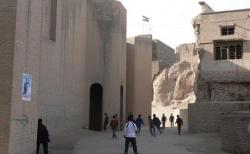 Erbil - Located at the heart of the capital of Iraqi Kurdistan, the citadel is an archaeological treasure. One of the oldest continuously inhabited human settlement in the world. It boasts over 6,000 years of history and displays traces of numerous civilizations such as the Sumerian, Babylonian, Greek, Islamic and Ottoman. The restoration process is divided into two separate sectors: one in collaboration with UNESCO, the other conducted individually by the Kurdish government-funded HCECR. UNESCO’s work involves technical studies on how to renovate the buildings, with a particular focus on houses on the slope of the citadel. They are preparing a master plan for the citadel and consider its application as one of UNESCO’s World Heritage Sites. On their part, the local team focuses mainly on maintaining the existing buildings, since most of them are in bad condition and face the risk of collapse. Dara al-Yaqubi, the Head of HCECR, is proud to say that they have preserved 106 houses in the past eight months alone which despite the heavy rains that flooded parts of the city recently, stood firm. In the past, such rainstorms would usually destroy many of these old mud houses on the citadel. “There are many things to research underground at Erbil Citadel,” said al-Yaqubi, “but what is above the ground is also valuable. This is what interests the people. We need to preserve this, and we cannot start digging yet.” Al-Yaqubi does not want to rush. “The best way to save archaeology is to keep it underground, unless you know exactly how to excavate it. We will wait and plan for that.” he said.
Erbil - Located at the heart of the capital of Iraqi Kurdistan, the citadel is an archaeological treasure. One of the oldest continuously inhabited human settlement in the world. It boasts over 6,000 years of history and displays traces of numerous civilizations such as the Sumerian, Babylonian, Greek, Islamic and Ottoman. The restoration process is divided into two separate sectors: one in collaboration with UNESCO, the other conducted individually by the Kurdish government-funded HCECR. UNESCO’s work involves technical studies on how to renovate the buildings, with a particular focus on houses on the slope of the citadel. They are preparing a master plan for the citadel and consider its application as one of UNESCO’s World Heritage Sites. On their part, the local team focuses mainly on maintaining the existing buildings, since most of them are in bad condition and face the risk of collapse. Dara al-Yaqubi, the Head of HCECR, is proud to say that they have preserved 106 houses in the past eight months alone which despite the heavy rains that flooded parts of the city recently, stood firm. In the past, such rainstorms would usually destroy many of these old mud houses on the citadel. “There are many things to research underground at Erbil Citadel,” said al-Yaqubi, “but what is above the ground is also valuable. This is what interests the people. We need to preserve this, and we cannot start digging yet.” Al-Yaqubi does not want to rush. “The best way to save archaeology is to keep it underground, unless you know exactly how to excavate it. We will wait and plan for that.” he said.
http://www.rudaw.net/english/culture_art/3650.html
- PAKISTAN – 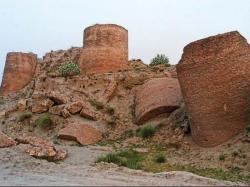
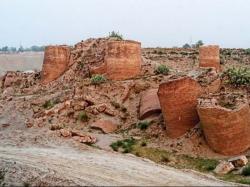 Mola Gujjarpura - Archaeologists have discovered the ruins of a bridge in Mola Gujjarpura near Lakho Dehar, Ferozwala tehsil that they believe was part of the GT Road in the Mughal era. The binding material used for the bridge is the same as had been used for the Lahore Fort and Jehangir’s Tomb, a combination of jute, lime, brick and other materials. Punjab Archaeology Department deputy director Muhammad Afzal Khan said, “The structure most likely was built in the reign of Jehangir or Shahjahan. This bridge was built for the Grand Trunk Road so that there would be access from Lahore to Delhi.”
Mola Gujjarpura - Archaeologists have discovered the ruins of a bridge in Mola Gujjarpura near Lakho Dehar, Ferozwala tehsil that they believe was part of the GT Road in the Mughal era. The binding material used for the bridge is the same as had been used for the Lahore Fort and Jehangir’s Tomb, a combination of jute, lime, brick and other materials. Punjab Archaeology Department deputy director Muhammad Afzal Khan said, “The structure most likely was built in the reign of Jehangir or Shahjahan. This bridge was built for the Grand Trunk Road so that there would be access from Lahore to Delhi.”
http://tribune.com.pk/story/161153/mughal-heritage-17th-century-road-bridge-found/
- ISRAËL – Jiftlik - The tour was intended to survey progress in the nearby archaeological digging sites, where a clinic for the village residents is set to be built- During the excavations, archaeologists unearthed buildings from the ancient Roman and Byzantine periods, as well as ceramic shards, basalt tools, a preserved furnace and 40 historical coins. The coins were transferred to the Head of the Archaeological Department in the Civil Administration, who will determine their origins and help clean and preserve them before presenting the historical artifacts to the public.
http://idfspokesperson.com/2011/05/04/civil-administration-excavates-archaeological-ruins-to-build-palestinian-medical-clinic/
- USA - Lindenmeir Site - More than 10,000 years ago, Native Americans crossed through Northern Colorado. Today, Dr. Jason LaBelle and CSU archaeology students work to document locations of historical evidence left behind. The event featured different natural areas throughout Colorado but specifically examined Fort Collins’ own Lindenmeir Site at the Soapstone Prairie natural area just north of Fort Collins. Since 2006, LaBelle has surveyed the Lindenmeir Folsom Site in attempts to better understand the Laramie Foothill Mountains- Named a National Historic Landmark, excavations in the 1930s by the Smithsonian and the Colorado Museum of Natural History of the Lindenmeir Site gave archaeologists insights to the ancient Folsom culture, a Paleo-Indian sequence dating between 9000 BC and 8000 BC. According to LaBelle, Lindenmeir is the New York City of Folsom sites. “It’s a very unique and distinct site being located directly halfway between Canada and Mexico,” LaBelle said. Discovered were lots of decorative arts including beads, stone tools and jewelry. The discovery of art-related artifacts led archaeologists to determine the Folsom people traveling through the Lindenmeir Site had substantial downtime. “The time and effort put into these crafts makes us understand that these people lived at the Lindenmeir Site for an extended period of time,” LaBelle said.
http://www.collegian.com/index.php/article/2011/05/10000yearold_human_history_unearthed